HISTORICAL DATA ABOUT OUR MOST EMBLEMATIC CAVE
Sant Josep Site
Sant Josep Site has traditionally been a leisure spot, especially for the local public. At the beginning of the 20th century, there is already evidence of works being made to organize the natural space, providing it with lighting and even kiosks where cold drinks were supplied to visitors.
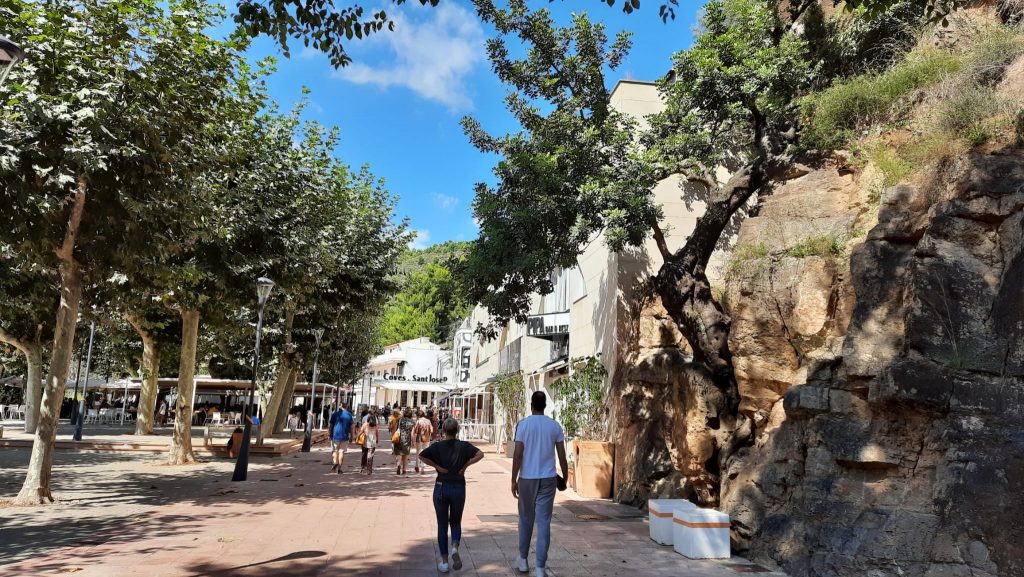
The residents of the town took the opportunity to come for a walk with friends and family to have a picnic, eat or have a snack in the area, especially on special dates such as Easter or during the Holy Family Festival in October. On these excursions it was quite common to enter the cave, either out of mere curiosity or as a sign of bravery, sometimes causing mishaps and scares due to stumbling due to the lack of lighting.
Given this situation, a gate was placed at the entrance to prevent access and possible accidents. It is also at the beginning of the 20th century when the local bricklayer Paco “l’obrer” (Francisco Daròs) was commissioned to build the staircase connecting the entrance of the cave with the Hermitage of the Sagrada Familia.
Cave exploration
The Font de Sant Josep spring has been used since time immemorial. Not in vain there are remains of human occupation from the Upper Palaeolithic, about 17.000 years ago, when the human groups that lived in the cavities of the area, a very different environment to the current one, took advantage of the fresh water of the underground river of Coves de Sant Josep.
Although different cultures have passed through this cave, from the Palaeolithic hunter-gatherers to the Iberians and Romans, the entrance to the cave was even used as a shelter during the Civil War. However, the water of the river and the different underground siphons created by the erosion of the water have allowed the interior of the cave to be hidden for thousands of years.
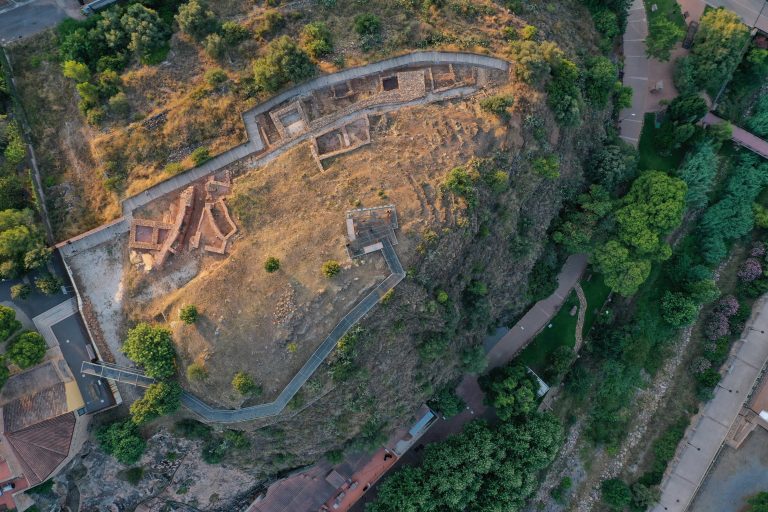
First incursion into the caves
The first
documented technical exploration that managed to cross the Boca del Forn,
the first underground siphon about 100 metres from the wharf, was carried
out at the end of 1897 by the Valencian engineer José Gimeno Lassala. The
incursion was carried out at the request of the town council, which asked for a
study to improve the use of the flow of the underground river for consumption
and irrigation of the fields, as well as to carry out an analysis of the
quality of the spring water. For this purpose, with the help of a boatman from
the Almenara marsh, the aim is to find a deeper point where the water can be
taken from. It was then, according to the report in the municipal archive, that
the engineer overcame the first siphon and reached «where no human
being had gone before». Until then, there was no evidence that anyone
had successfully passed that siphon: la Boca del Forn.
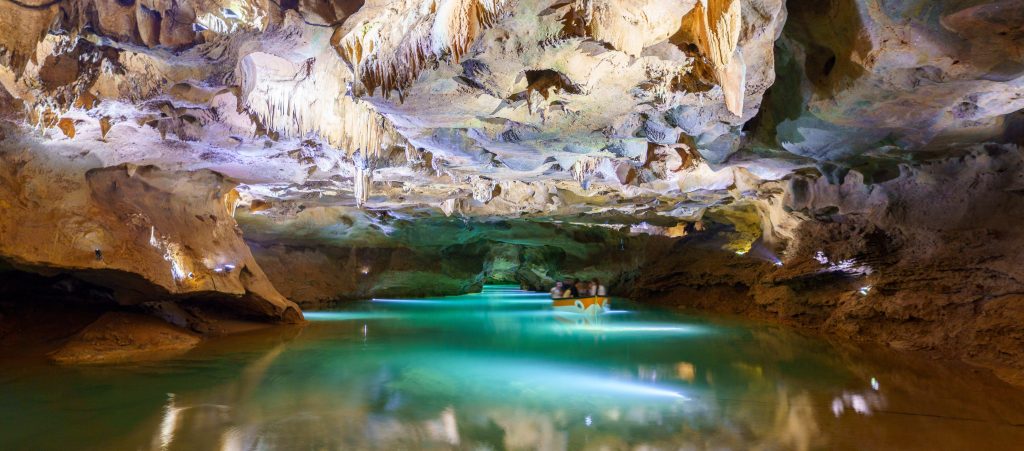
Since then, many curious visitors began to enter by boat into the cave, attracted by the curiosity the cave aroused among the population. It is even said that some, with the help of improvised plank footbridges, tried to penetrate a few dozen metres to admire the cave and the thousands of bats that inhabited it, although without overcoming the first natural obstacle: la Boca del Forn siphon.
In the middle of the 20th century, the first electric light was installed inside the cave, as until then those who entered the cave did so with torches. The new lighting, initially designed for research in the cave, encouraged the arrival of tourists to the Sala de los Murciélagos, where they were amazed by the colony of thousands of bats.
At this time,
the narrow pass of the Boca del Forn, a siphon that until then had been
impassable by boat, was drilled to slide a small canoe through and thus
discover other galleries formed by the underground river.
The first visitors of Coves de Sant Josep
Visits to the cave were not yet seen as a profitable tourist activity and, although the town council plans to open the cave to the public for an entrance fee, there is no record of any such charge being levied at any time.
In the presence of celebrities, the entrance gate was opened so that the guest could see the spring from the inside. At that time, a rudimentary wooden platform had been set up leading to the Sala de los Murciélagos where, by the light of a few bulbs, the visitor could observe the colony of these flying mammals clinging to the vault of the gallery. At the end of the walk along the footbridge, the gate was closed again, and the cave remained closed for a long time.
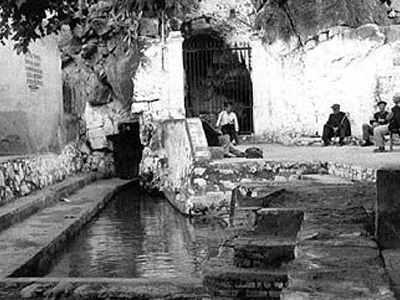
A wet visit
On 20th March 1929, on the arrival of General Sanjurjo, Director General of the Civil Guard during the dictatorship of Primo de Rivera, a large entourage of politicians and provincial officials of the time arrived in La Vall d’Uixó. After various events, they were invited to a banquet in the surroundings of the area. Taking advantage of the proximity of the cave, some of these high-ranking officials dared to enter it, among them José Castelló Madrid, the Civil Governor of Castellón, who unfortunately ended up falling into the water. Because of the little sympathy that this person aroused in society, especially among his political adversaries, he was for a long time the object of ridicule for this dip in the underground river. Moreover, a few years later, when he was already stationed in Teruel, he was still reminded of that episode in the cave, even suggesting that, should he be invited to another banquet, he should stay away from ditches and ponds in case he fell headfirst into the water again.
An emerging tourism
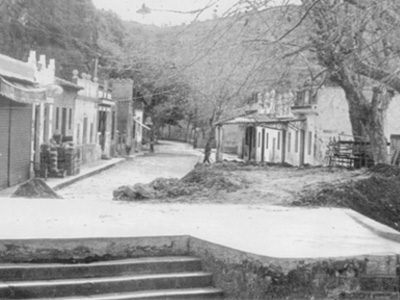
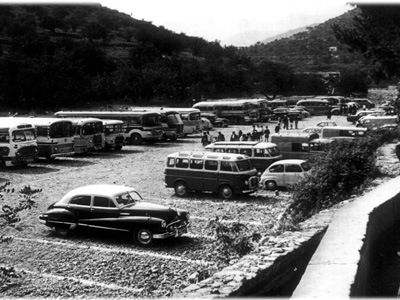
It was not until well into the 1950s, with the increasing access to motor vehicles for families, that the site began to be visited in a more touristic way, initially at a regional and county level. However, no one in the town had yet realised the true potential of the cave.
During the heavy torrential rains of October 1956, the underground river rose in an exceptional manner, destroying the wooden walkway leading to the Sala de los Murciélagos, as well as the electrical installation. It was then announced that an unprecedented exploration would be carried out the following summer to find the source of the spring.
In 1958 the first topographical map of the cave was drawn up by the Centro Excursionista de Valencia. At this time, the aim was to make the visit more extensive, beyond the first gallery (the Sala de los Murciélagos). Although it was not yet planned to make the route navigable by boat, given the morphology of the cavity. However, a project was outlined to build swimming pools, children’s games, restaurant services, etc., to make Paraje de Sant Josep more attractive to tourists.
In order to enlarge the space for the boat tour, the narrow passages were dynamited, and the underground river was drained to remove debris and rocks. From this point on, the number of tourists grew exponentially from over 3.000 visitors in 1960 to 20.000 the following year. This number doubled in 1962 and Valencian travel agencies began to include a visit to the site among their regular tourist excursions. In view of its success, the prestigious Catalan engineer Carlos Buigas, “el Mago de la Luz”, was commissioned to install a new lighting system, which highlighted the limestone formations and the underwater depths.
In the following years, the cave continued to be explored, thus completing the fitting out of the visitable part, which in 1969 reached the current route when the Galería Seca (Dry Gallery) was opened that same summer. After several expeditions between 1971 and 1975 by the O.J.E. Speleology Group of Castellón and cavers from the Club Muntanyenc of Barcelona, new galleries and siphons were discovered, managing to topograph up to 2.348 metres of the cave.
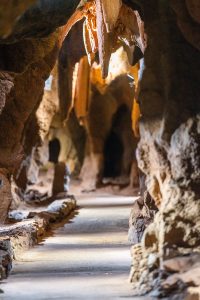
New discovery in Coves de Sant Josep
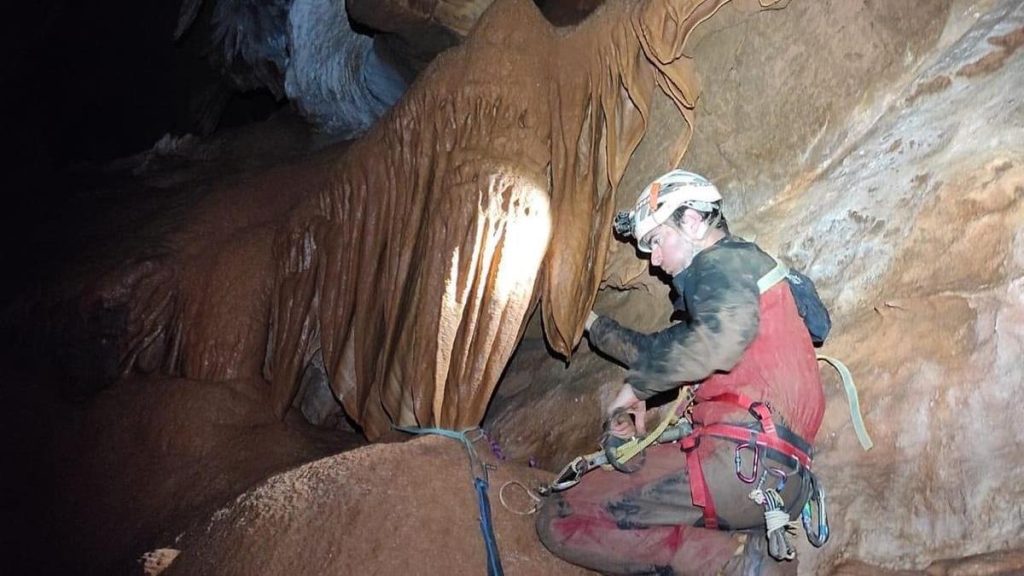
The last gallery was discovered in January 2023, when the Alto Palancia Underground Expeditions Group and the EOM Speleodiving Group, accompanied by Espeleoclub la Vall d’Uixó, discovered a new room in Coves de Sant Josep, called Sala d’en Guillem in honour of its discoverer.
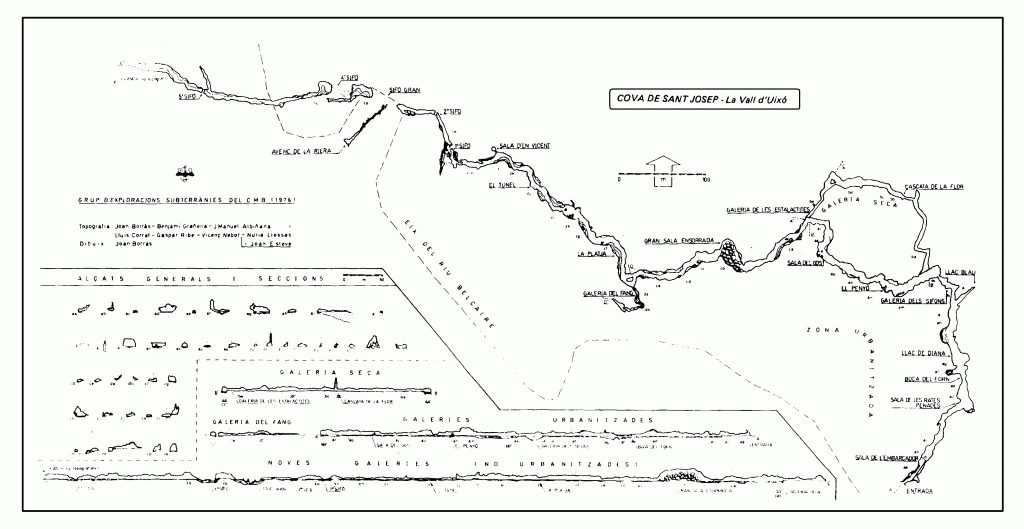
Nueva galería encontrada en Coves de Sant Josep
Una emocionante revelación Coves de Sant Josep Tras más de 120 años de apasionantes incursiones en las entrañas de la cavidad, ¡las enigmáticas Coves de Sant Josep nos vuelven a sorprender!! No sólo nos desconcierta



